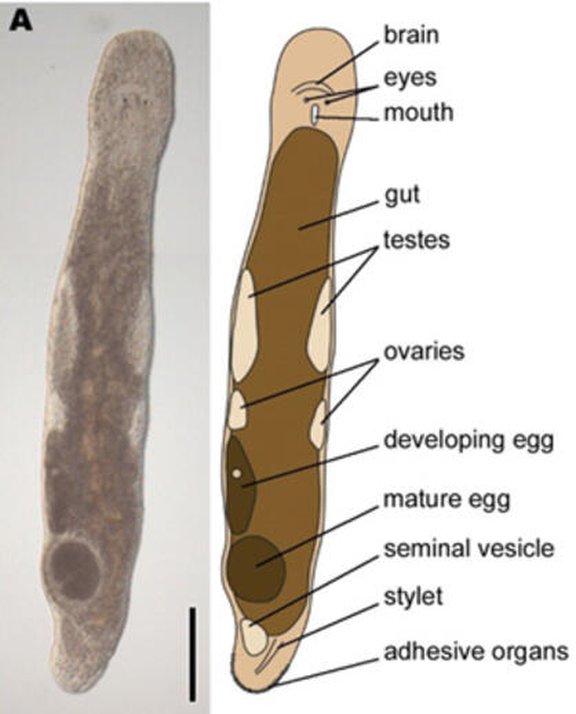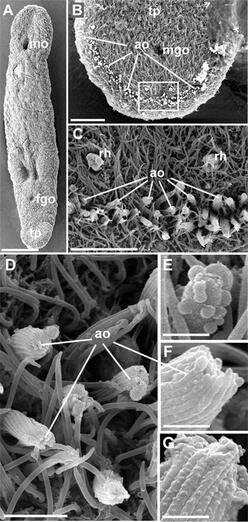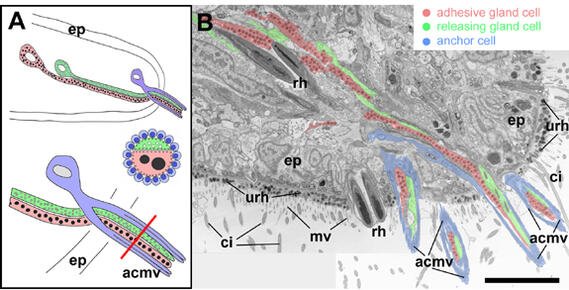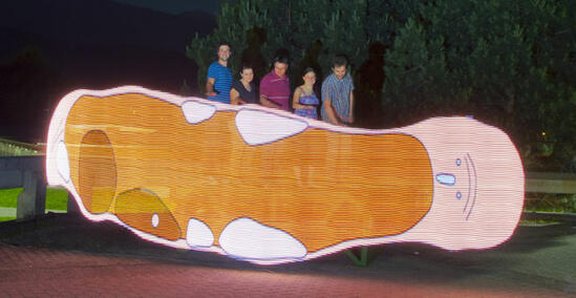Bioadhesion meets functional genomics in flatworms


Bio-inspired adhesives have the potential establishing the basis for innovative industrial adhesives to be used in biomedicine or for high-tech applications. A broad range of organisms use adhesives to attach to substrates but the nature of these glues is not well understood. Current efforts are aiming to unravel the molecular basis of biological adhesion of diverse organisms. We are investigating free-living flatworms (Platyhelminthes) which are able to adhere and release from the substrate using duo-gland adhesive organs. Our model organism - the free-living flatworm Macrostomum lignano possesses about 130 adhesive organs, which enable the worm to adhere to and release rapidly from the substrate. The adhesive organs consist of three cell types, an adhesive gland cell, a releasing gland cell, and a modified epidermal cell. Based on our knowledge of the morphology and the available molecular biology tools we aim to characterize molecules involved in the adhesion and releasing process. Using comparative transcriptomics in combination with a large-scale in situ hybridization screen, we could so far identify 29 possible adhesion or releasing related transcripts. Further investigations may lead to the finding of a de novo bio-mimicked glue and a corresponding solvent.
Supported by FWF P25404-B25 and COST action TD090


